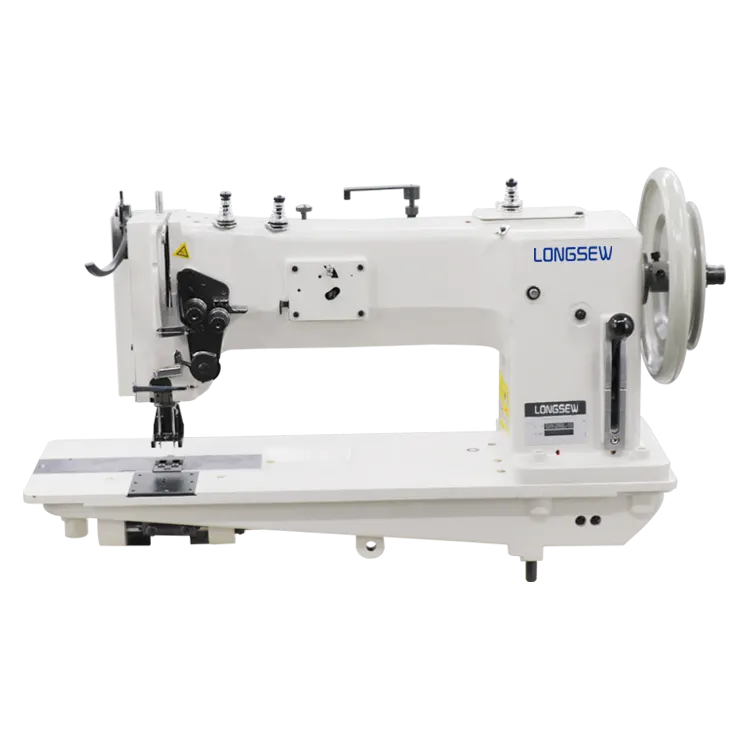long arm double needle chain stitch
The Long Arm Double Needle Chain Stitch A Versatile Tool in Textile Production
In the world of textile production, efficiency and precision are paramount. Among the various sewing techniques employed by manufacturers, the long arm double needle chain stitch is a standout method that offers both versatility and enhanced productivity. This stitch is particularly prominent in the construction of garments, providing a robust and elastic seam that is crucial for many types of clothing.
Understanding the Basics
To grasp the significance of the long arm double needle chain stitch, it is essential to understand its basic mechanics. This stitching technique uses two needles and a single looper, creating a unique stitch formation that combines the strengths of both the lock stitch and the conventional chain stitch. The presence of double needles allows for two parallel lines of stitching, which not only boosts the seam's durability but also introduces an appealing aesthetic element to the finished product.
The long arm feature of this sewing machine allows for increased mobility and flexibility when working on larger pieces of fabric, making it ideal for operations involving larger garments or textiles. As industries move towards mass production, the ability to quickly and accurately sew larger pieces of fabric can significantly reduce turnaround times.
Advantages of Long Arm Double Needle Chain Stitch
One of the primary advantages of the long arm double needle chain stitch is its inherent strength. The stitch structure is less likely to break under tension, making it ideal for seams that undergo a significant amount of stress, such as those found in activewear, heavy jackets, or workwear. Moreover, the double line of stitching enhances the overall appearance of garments, providing a professional finish that appeals to consumers.
Another significant benefit is the stretchability that this stitch offers. The chain stitch allows the seam to stretch without breaking, which is crucial for clothing items that require flexibility and movement. This makes it particularly popular in the production of stretch fabrics such as knits and spandex blends.
Additionally, the long arm feature minimizes interruptions during the sewing process, allowing for the seamless addition of length and complexity to a garment. It accommodates larger fabrics and reduces the hassle of constantly repositioning materials on the sewing table.
long arm double needle chain stitch

Applications in Fashion and Apparel
The applications of the long arm double needle chain stitch are extensive in the fashion and apparel industry. It is commonly employed in creating hems, seaming, and decorative stitching on various garments, ranging from casual wear to formal attire. The technique is especially valuable for producing jeans, where the strength of the stitching needs to withstand not only the wear of everyday use but also the rigors of washing.
In addition to clothing, the long arm double needle chain stitch finds its place in the manufacturing of home textiles. From bed linens to decorative throws, this stitch provides the durability necessary for items that suffer from frequent washing and use.
Maintenance and Considerations
Using a long arm double needle chain stitch sewing machine requires proper maintenance to ensure longevity and optimal performance. Regular cleaning and lubrication are essential, as debris and fabric remnants can affect stitch quality and machine functionality. It's also important for operators to be trained in threading and using double needles, as improper setup can lead to machine jams or poor-quality stitching.
As with any sewing technique, the choice to use the long arm double needle chain stitch should be guided by the specific needs of the project at hand. While it is a versatile and effective method, it is essential to consider the fabric type, project requirements, and the desired finish.
Conclusion
The long arm double needle chain stitch is an invaluable asset in textile production, blending durability with aesthetic appeal. Its unique properties make it suitable for a wide range of applications, ensuring both strength and flexibility in seams. As the fashion industry continues to evolve, the relevance and utility of this stitch are likely to remain strong, reflecting the ongoing need for efficiency and quality in garment manufacturing. By embracing such innovative stitching techniques, manufacturers can better meet the demands of modern consumers seeking both functionality and style in their clothing.
-
Boost Production Efficiency with a Pattern Sewing MachineNewsAug.29,2025
-
Industrial Excellence with the Best Heavy Duty Sewing MachineNewsAug.29,2025
-
Precision and Power with the Best Pattern Sewing MachineNewsAug.29,2025
-
Reliable Bulk Packaging Starts With the Right FIBC Sewing MachineNewsAug.29,2025
-
Advanced Packaging Solutions: Elevate Productivity with Jumbo Bag Sewing Machine and Industrial Stitching EquipmentNewsAug.29,2025
-
High-Performance Solutions for Bulk Packaging: FIBC Sewing Machine and MoreNewsAug.29,2025
-
Maximize Efficiency with an Industrial Cylinder Arm Sewing MachineNewsAug.28,2025


























